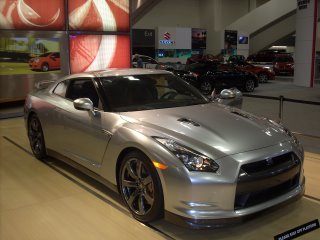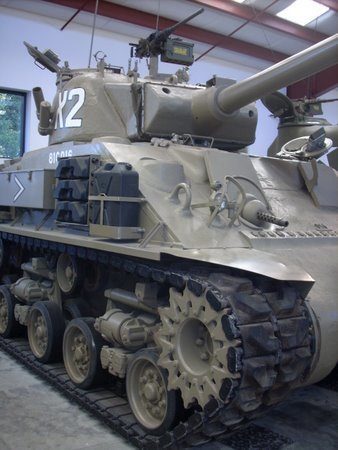Exotic SUV’s and how we may come to embrace them

The time has come, Bentley has debuted an official effort at entering the growing and often criticized luxury SUV market. Although we have seen the luxury SUV market thrive for over a decade with the likes of Cadillac, Lincoln and Lexus, it is the ultra-high-end segment that still needs substantiating, or not. Many enthusiasts turn their nose up at the idea of sports and supercar brands extending into sport utility vehicles, or as BMW prefers, sport “activity” vehicles, but the trend does not seem to be in these critics’ favor. After all, though these brands hold enthusiasts dear, all signs of the market for these types of vehicles signal potential profits that just can’t be ignored. Believe it or not, the idea of an ultra-lux or supercar based SUV is a dusty proposition that hasn’t gained marketable traction until the last few years or so. Let’s take a look at how the industry and consumers perceived luxury SUV’s in the past, and how this perception has molded into the new tangible examples we have today.
SUV’s have always had an inherently luxurious aspect to them despite their truck-based origins. In the past (particularly early 1990’s to early millennium), wood trim, massive wheels and chrome detailing was not necessary for consumers to perceive SUV’s as luxurious. At their core, they are a lot of vehicle: large engines, large price tags, lots of material, lots of gas and variable functionality. In particular, large engines and the ability to tackle variable terrain carry associations of luxury, freedom and power, all of which are attributes you don’t need to disguise in wood trim. Land Rover and its Range Rover line are one of the oldest examples of this association, connecting capability to luxury. Hummer is another great example of how sheer might and size can circumvent traditional luxury features to become a luxury vehicle. 
Don’t forget, Lamborghini has already taken a stab at the SUV market with its LM002, or “Rambo Lambo.” Sure, the car had fancy dyed leather and some electronic features, but it garnered most of its equity from its utilitarian capabilities, sheer size, and of course the exclusivity associated with Lamborghini’s limited production run. In addition, one interesting factor in the appeal of SUV’s is their sheer ride height. A legitimate preference no doubt, ride height also satisfies high-end, emotional needs in consumers. There is something about sitting above others on the road that establishes a sense of superiority. Add flashy chrome wheels, swaths of leather, and four circles or a three pointed star to it and you’re the undisputed king of the road.
So, why don’t these rudimentary associations between SUV’s and luxury still suffice? Our taste for high-end SUV’s has transformed as the vehicles themselves have begun to mimic cars, and as the options and availability have continued to skyrocket domestically as well as internationally. A Jeep Grand Cherokee was a fitting complement to your Jaguar 15 or 20 years ago. Today, a Jeep would not satisfy the same image alongside your Jag. Instead, you’d need an Escalade or Mercedes to garner the same respect from the country club valet. The Jeep satisfied those early needs of capability, ride height, power and size; hell, you could even get it with cushy leather on the seats. Now, as more and more brands offer sport utility vehicles, and showcase them as luxury items in their lineup, our expectations continue to change and grow. Deciphering a cross-over from an SUV from a wagon is becoming more and more challenging, and complements global demand as a legitimizing factor for exotic brands to enter the market. It does so because our less strict view of an SUV essentially lowers the barriers to entry and allows exotic auto brands to inject more of their brand equity and expertise into these vehicles.

Take our now retired Porsche Cayenne Turbo S rental for example. This was undoubtedly an SUV-based vehicle, yet Porsche found relevancy in putting racing brakes, massive wheels and a twin-turbo V8 good for 60 mph in just over 4 seconds. This was not a novelty type of effort from Porsche, they did so because consumers are now ready to perceive SUV’s as such vehicles and are thus good canvases upon which brands can paint their newest technologies and most important brand associations. With that being said, the idea of brands like Aston Martin, Lamborghini and Bentley making sport utility vehicles may not be so far off. And enthusiast concern over dilution of these brands is absolutely legitimate, but if these vehicles are as exciting and true to brand elements as the supercars are, is there a problem? There are plenty who may think the Porsche Cayenne is ugly or a lame vehicle, but even more attribute their positive outlook on the Porsche brand with it. Even better, the well-executed attempt and “SUVdom” has earned Porsche brand equity and stuffed pockets.
All in all, the entrance of exotic brands into the sport utility segment should not necessarily be seen as an unfitting attempt at short-term profit. Instead, perhaps they should be sees as exciting new examples from our favorite exotic auto brands, and should be held to the high expectation we always hold ultra-luxury and supercar brands to. You never know, one of these days you may find SUV’s as the dominant force among our Ferrari rentals, Lamborghini rentals and Lotus rentals…well, let’s not go that far.
Photo Credits:
http://www.netautocar.com/
http://steeringnews.com/wp-



